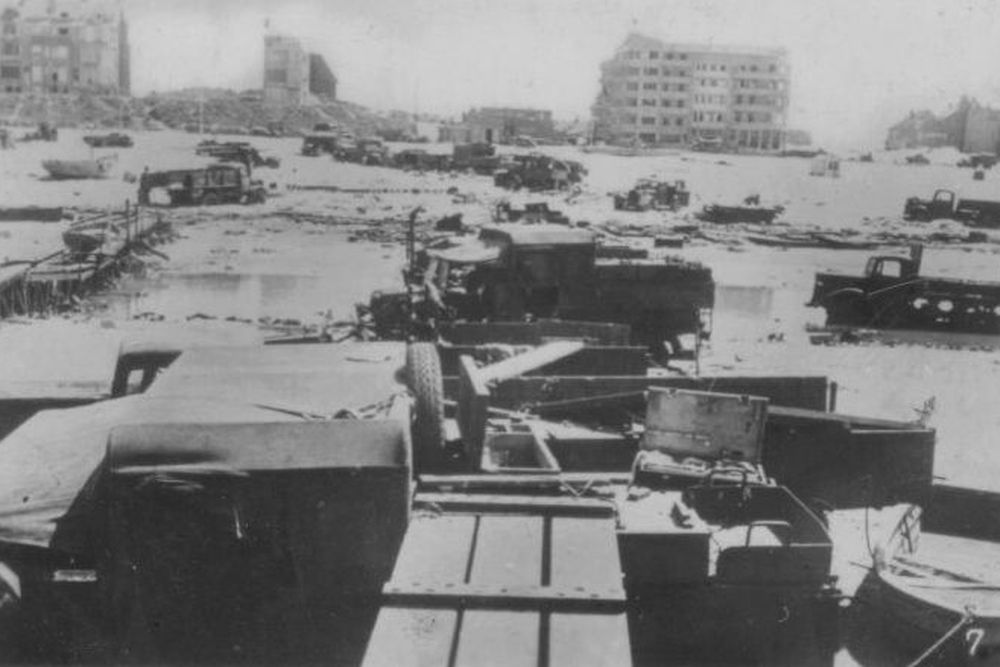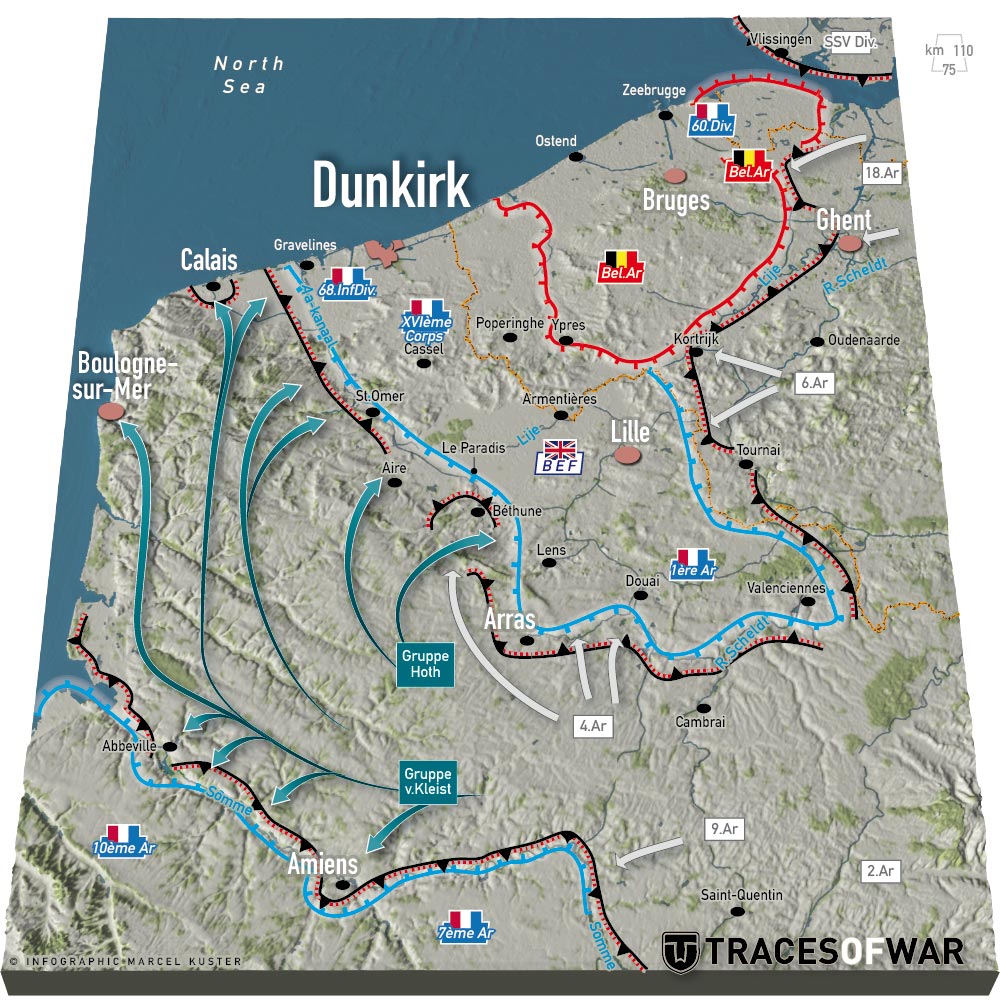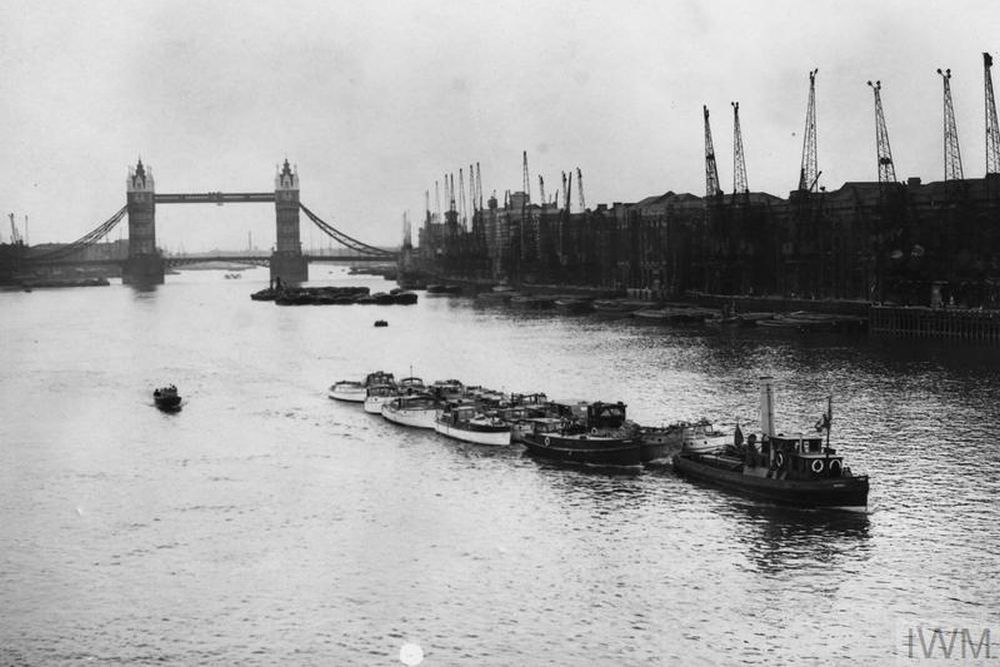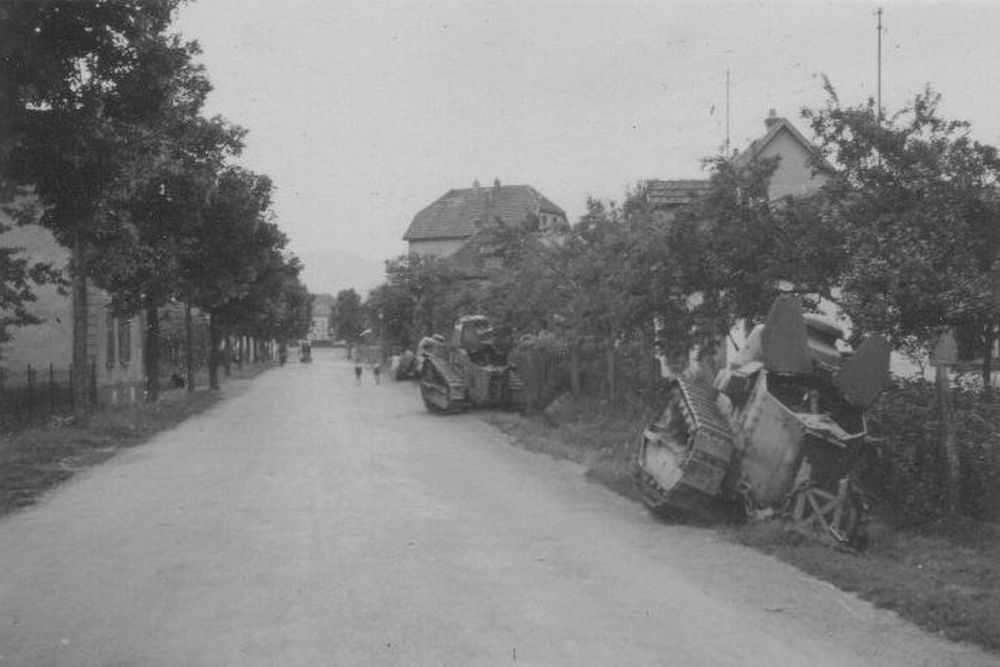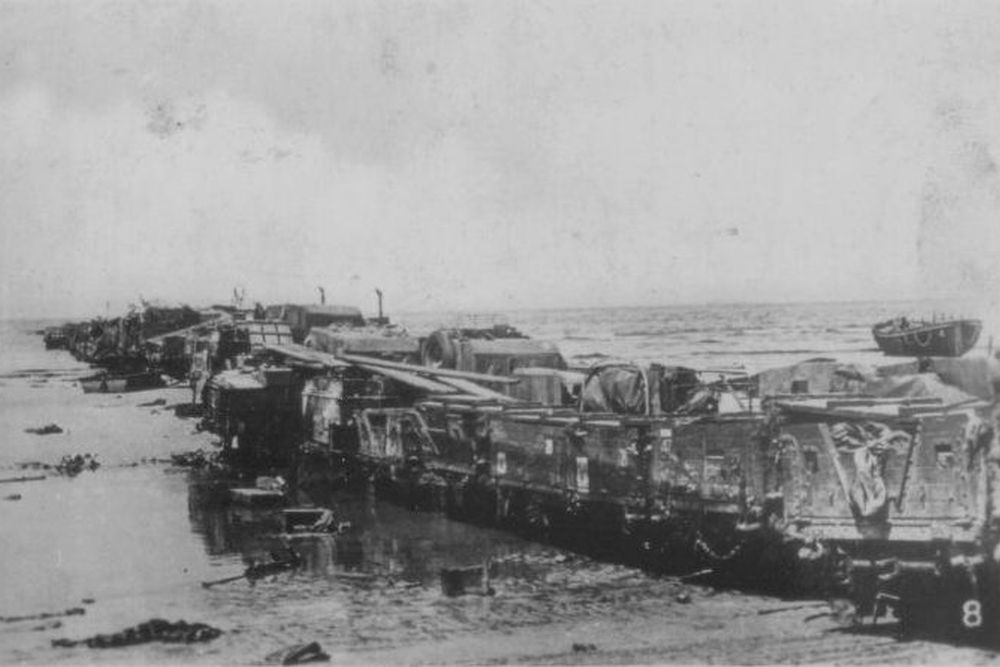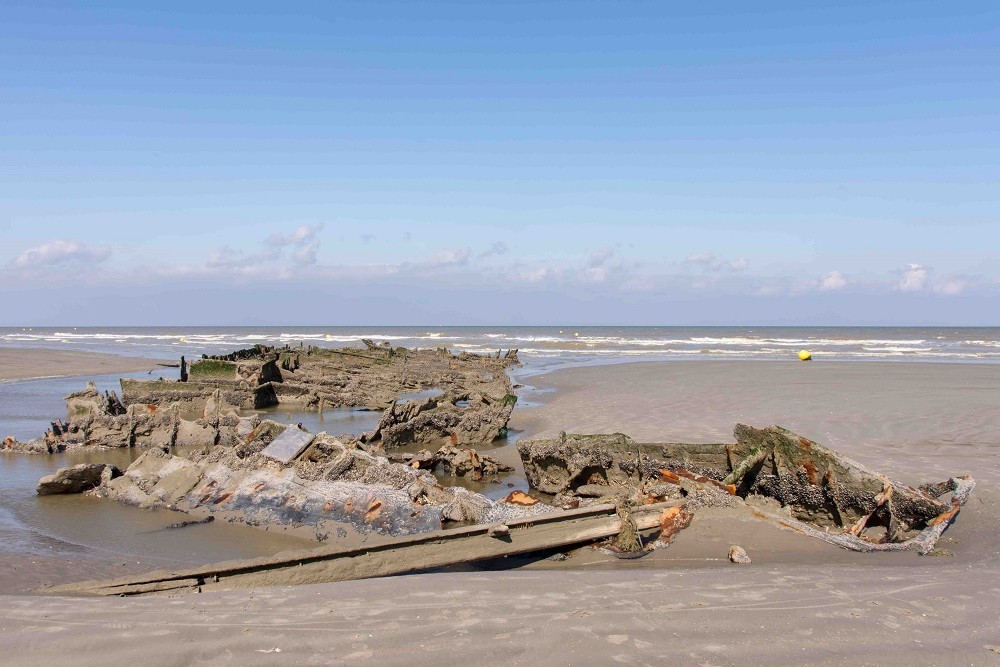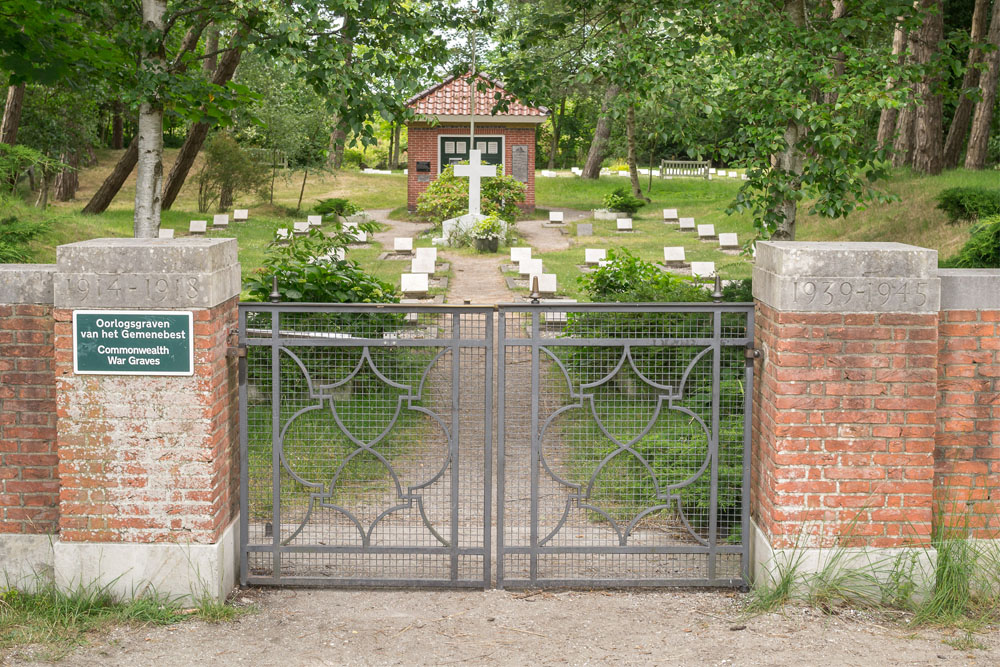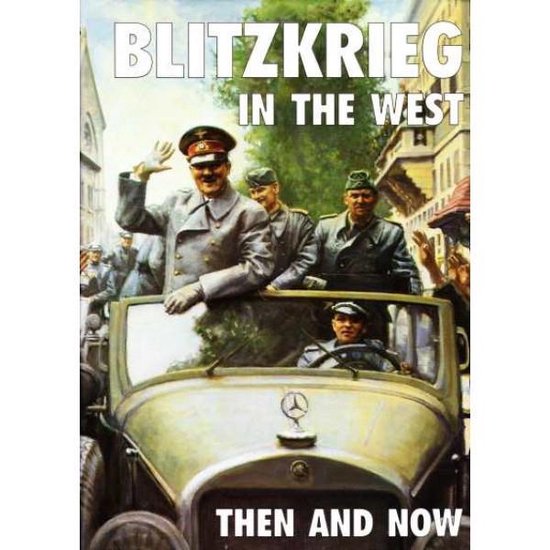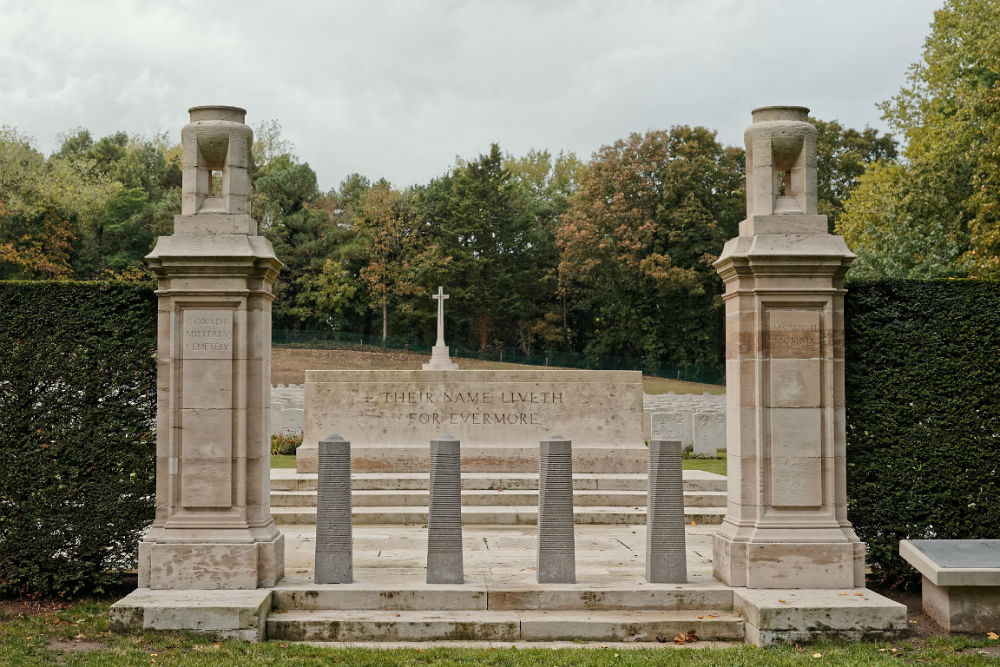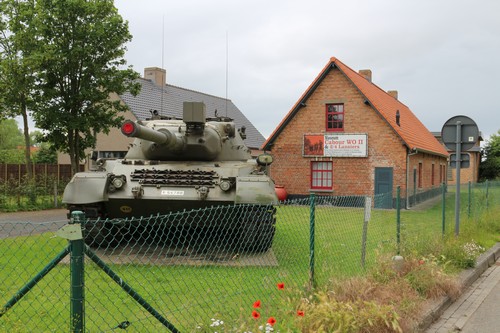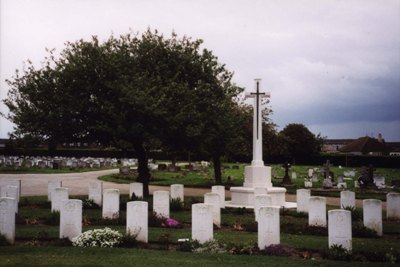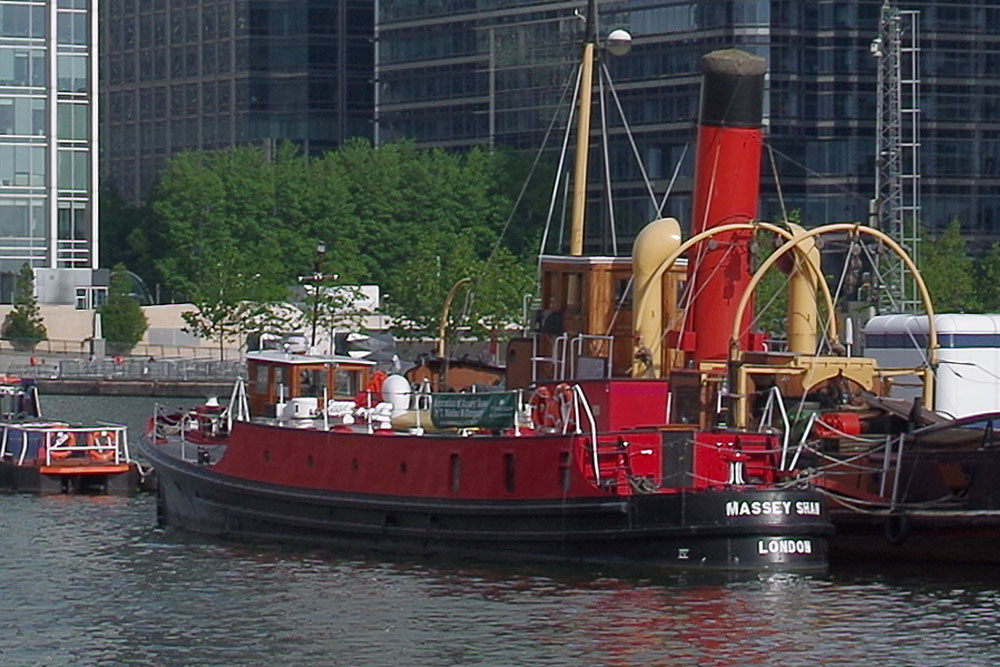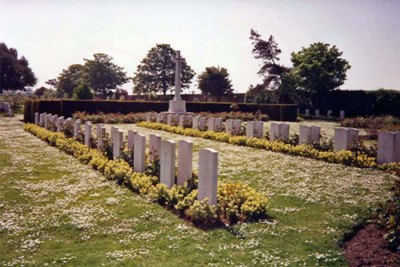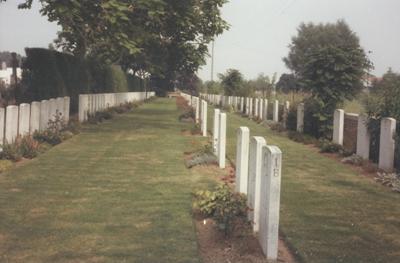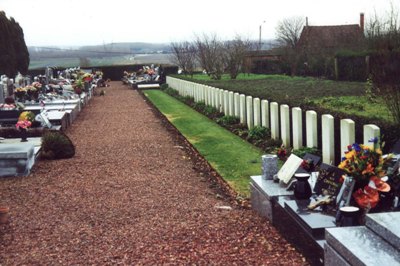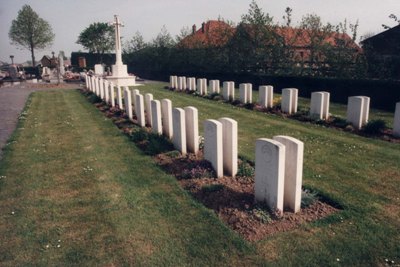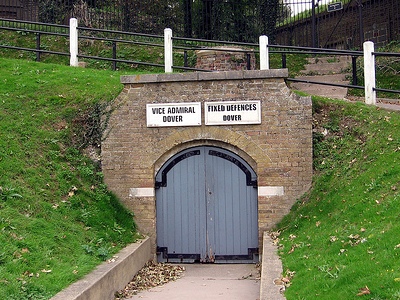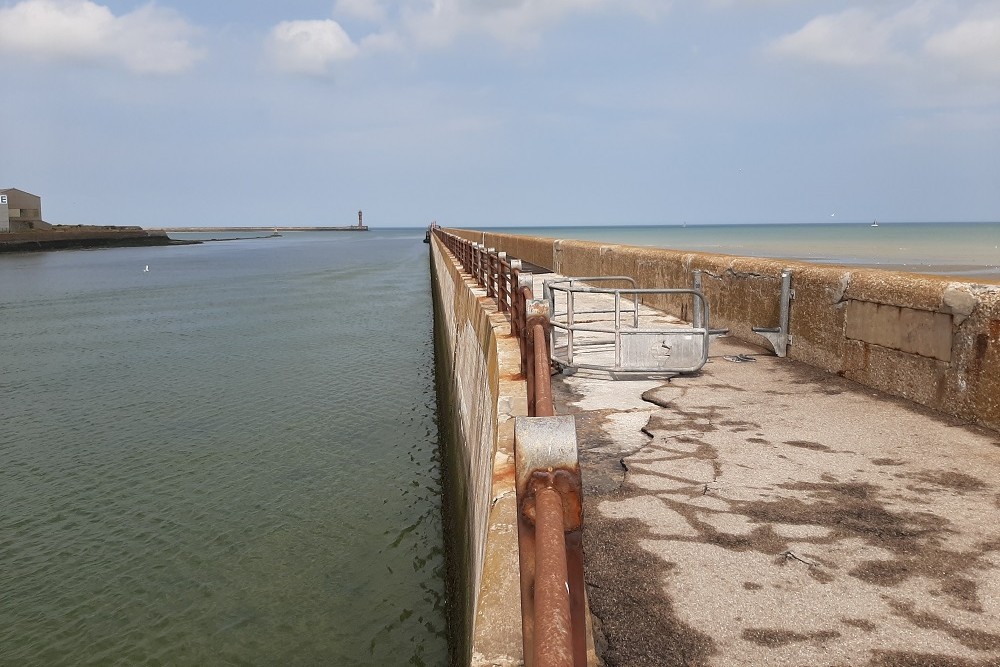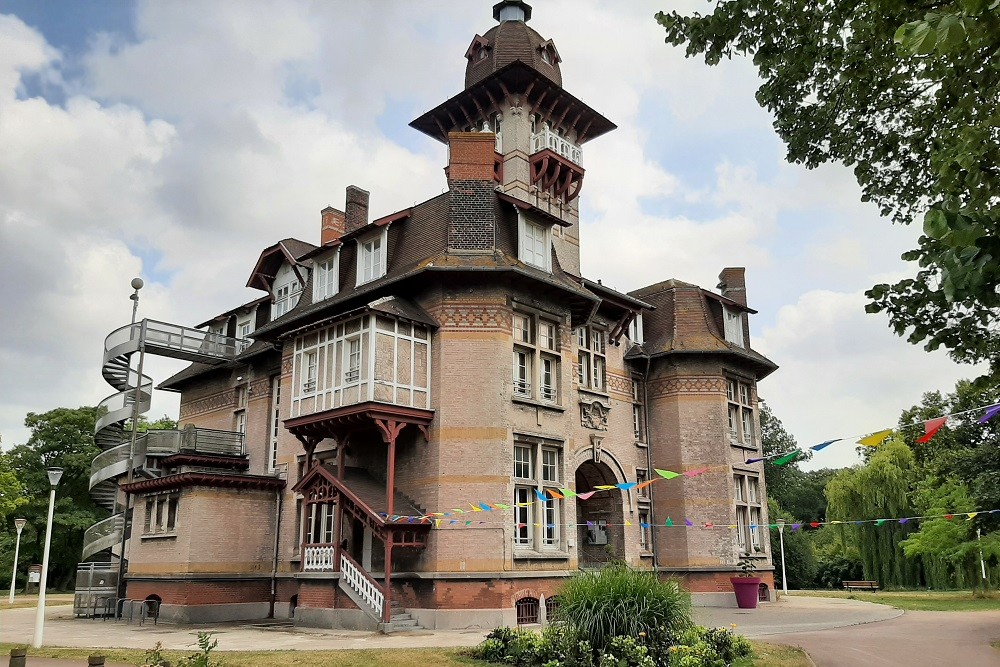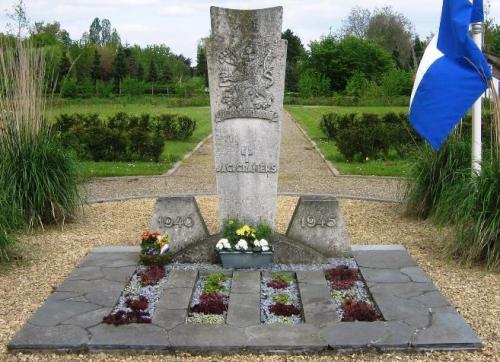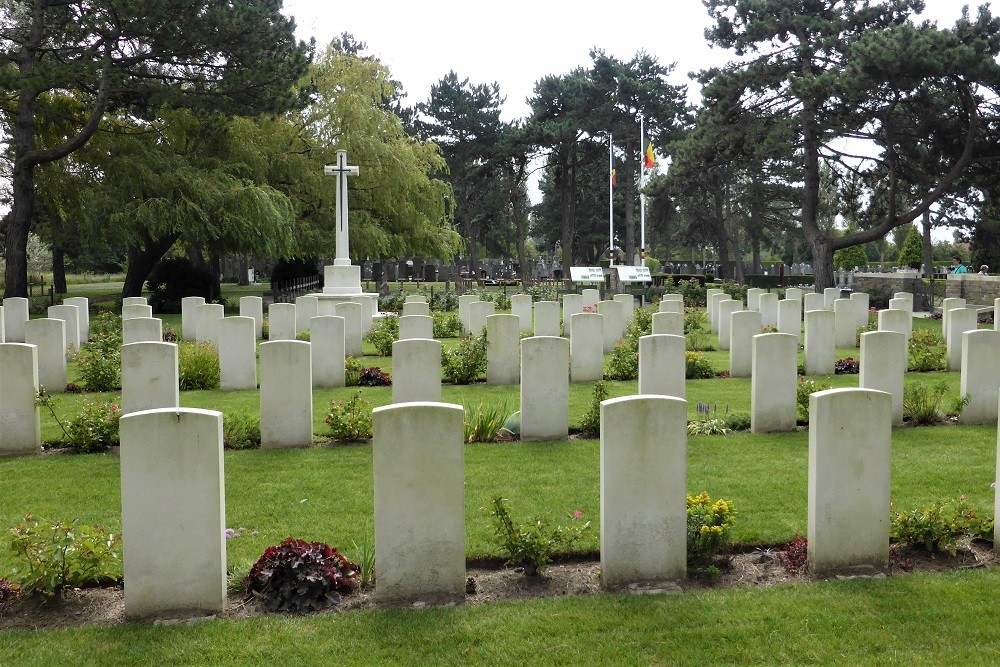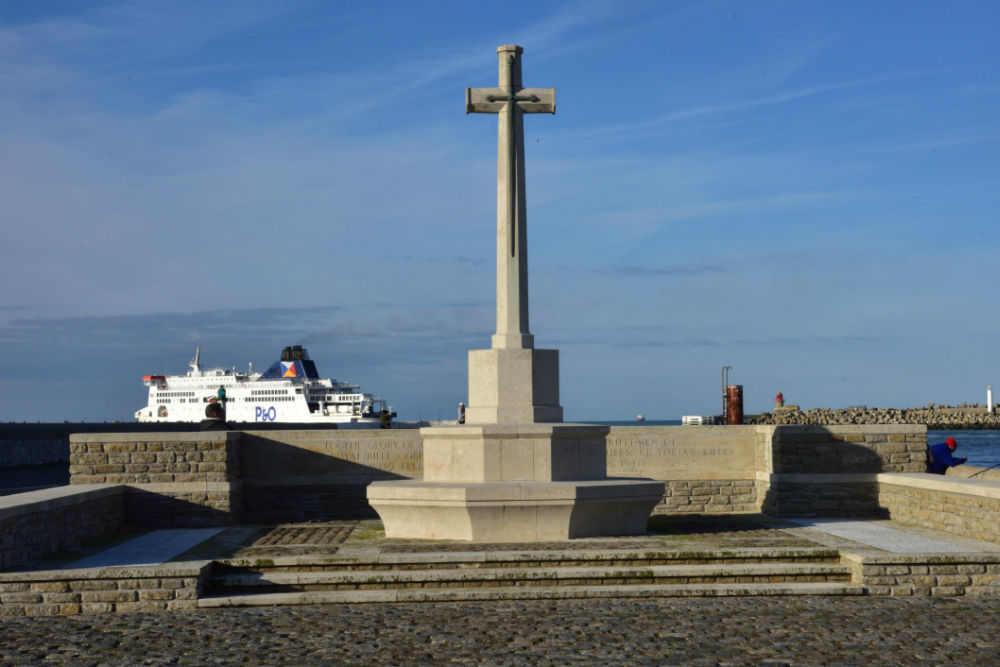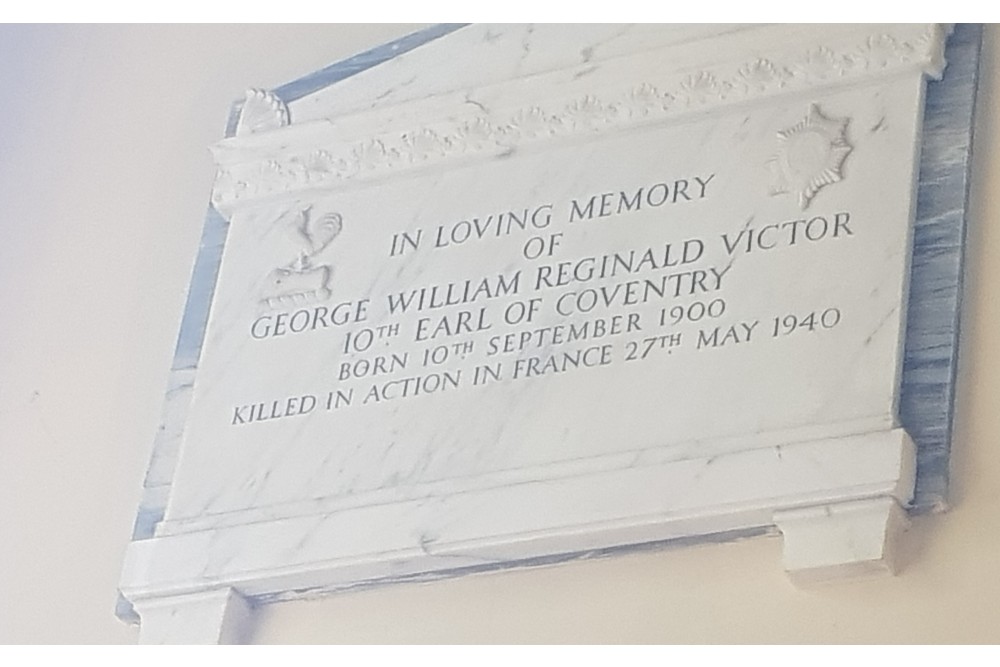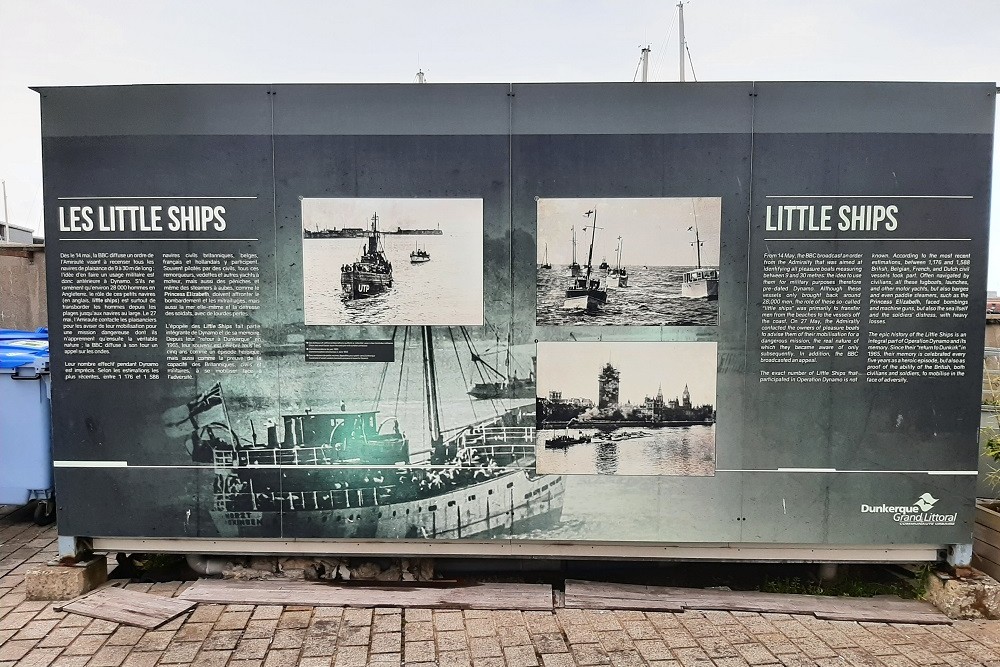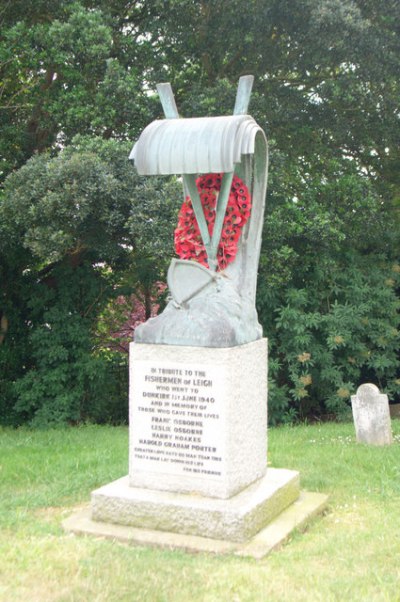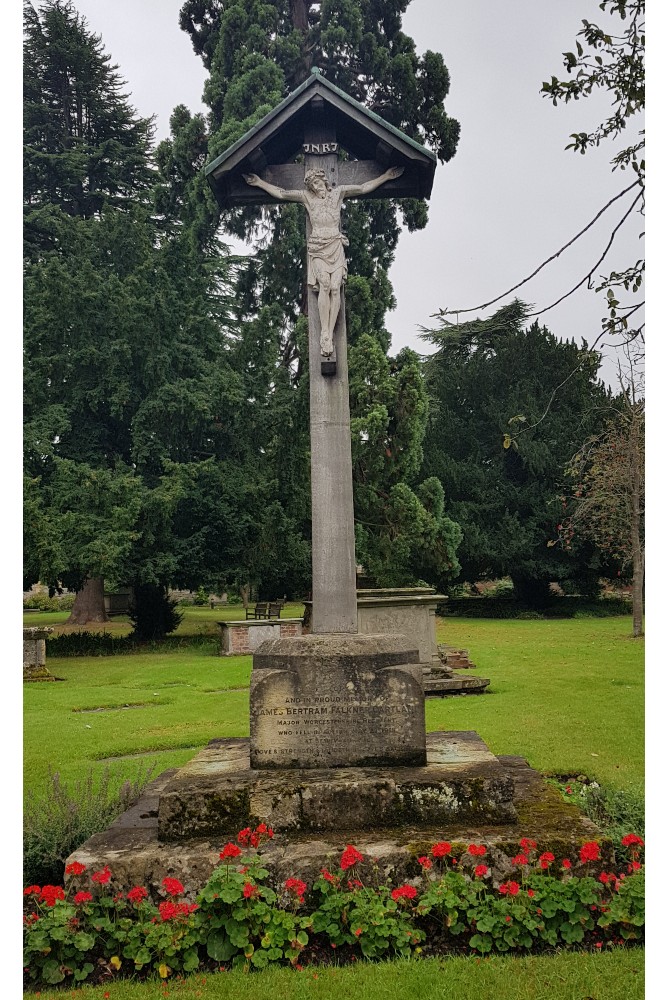Introduction
After the German breakthrough in the direction of the English Channel, the situation in Belgium was so precarious, causing Lord Gort to send an alert to the British War Office as early as May 1940, stating that in his view, an evacuation of the British Expeditionary Force (BEF) should be considered. Winston Churchill thought this reaction rather exaggerated. Yet, he had talks started between the War Office and the British Admiralty to prepare for a possible evacuation.
These talks would eventually lead to ‘Operation Dynamo’, the evacuation of the BEF from Dunkirk and as many other Allied troops as possible.
Last British offensive
In the early morning of May 20. 1940, the chief of the Imperial general staff, General Sir Edmund Ironside, paid a visit to Lord Gort in order to hand him instructions straight from the War Cabinet. The BEF was ordered to break out to the south, towards Arras, in order to restore the connection with the French troops in the south. Lord Gort however indicated he considered such an offensive impossible. After all, over nine of his divisions were engaged in battle against the enemy elsewhere in Belgium and they made up an irreplaceable part of the defensive line.
Lord Gort did commit himself though to launch a limited attack in the direction of Arras on May 21. To this end though, cooperation and support of the French was required. However, he had not heard anything from his French colleague, Général Gaston Billote. General Ironside immediately went to Billotte’s headquarters, only to find Billotte as well as Général Georges Blanchard totally dejected. In the end, he managed to convince the French generals to join the British offensive with two divisions. The eventual coordination was hopeless though so in the end, only two groups, consisting of just a tank battalion, an infantry battalion, a battery of field artillery and an anti-tank unit took part in the offensive.
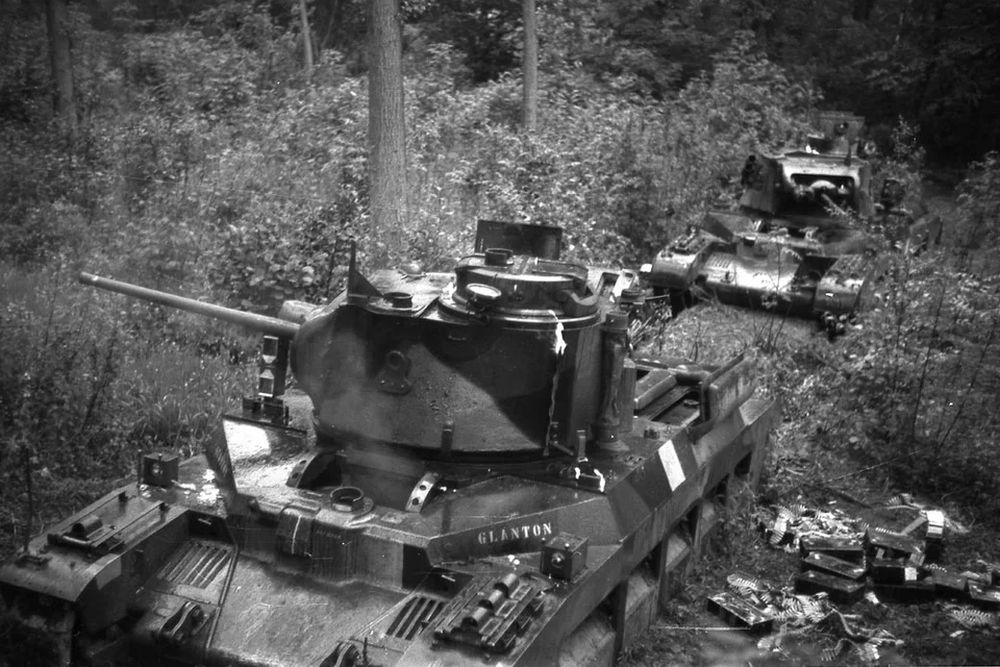
Disabled Matilda tanks of 7th Royal Tank Regiment after the british offensive near Arras, May 21, 1940. Source: Bundesachiv
The right flank managed to reach Duisans quickly but its strength was depleted as troops had to be left behind for protection. Near Waily, the advance was halted by the SS-Totenkopf-Division, forcing the British to retreat. The left flank advanced steadily as well and the British tanks were a good match for Erwin Rommel’s Panzer. Owing to a lack of supporting ground troops, the British pressure could not be exploited.
Generalmajor Erwin Rommel’s 7. Panzer-Division was struck by fear, causing him to launch a daring flanking attack to the northwest of Arras. By this threat, the British attack had failed in fact. Lord Got was convinced more than ever now, he had to pull his BEF back via Dunkirk.
Definitielijst
- Division
- Military unit, usually consisting of one upto four regiments and usually making up a corps. In theory a division consists of 10,000 to 20,000 men.
- infantry
- Foot soldiers of a given army.
- offensive
- Attack on a smaller or larger scale.
- Totenkopf
- “Death’s head”. Symbol that was used by the SS. Also the name of an SS Division.
Decision to evacuate
On May 21, the French commander-in-chief, Général Maxime Weygand, had decided to travel to the north himself for top talks with Général Gaston Billotte, Lord Gort and the Belgian king Leopold III in order to hand him his own plan for operations. Weygand attempted to persuade the Belgians to withdraw behind the river IJzer, shortening the frontline and enabling the British to continue their attack south. His French troops would then open an attack from the south towards the British. Negotiations did not proceed well. Lord Gort was not present on time and King Leopold III did not want to make any decision in the absence of the British. Lord Gort however was unable to release fresh troops by May 26. In the night of May 21 to 22, Général Gaston Billotte was involved in a road accident and he passed away a few hours later. At that moment in time, he was the only man in the north who knew all about Weygand’s plans. The breakthrough of the German forces and the capture of Abbeville, Boulogne and Calais meant the end of Weygand’s plan even before it could be launched.
On May 22, Lord Gort sent a telegram to the British Secretary of State for War, complaining about the lack of coordination between the British, Belgian and French troops. On May 23, he pulled back all his troops breaking out to the south. To Lord Gort, there was only one thing left. In his view, the French army had already been defeated and he was left with only one option: saving the BEF.
On May 24, the German Panzer were about to break out towards Dunkirk from their bridgehead on the Aa canal. At that moment, Adolf Hitler issued Weisung für die Kriegsführung Nr 13 which would ultimately result in the immediate cancelation of all offensive movements by all armored divisions in order to prepare for the next phase of the battle against France, Fall Rot Dunkirk was left to Hermann Göring’s Luftwaffe supported by a few infantry divisions. It would take no less than three days before Hitler changed his mind. At that moment, the British evacuation from Dunkirk was already in full swing though.
On May 26, Lord Gort received a telegram from the Secretary of State for War, Anthony Eden, containing the formal permission to go ahead with the evacuation of the BEF.
In consultation with the French, Lord Gort was to commence the withdrawal of the BEF to the coast. The French did recognize that the situation of the BEF was far from favorable but they had little desire to cooperate with the British plan. The Belgian army had abandoned all hope in the meantime.
The French weren’t happy with the British plan for two reasons. First, French military circles were of the opinion that everything had to be done to try and hold territory in the north. They fostered little hope of success of an evacuation and wanted the troops to keep fighting until the end. The second important reason was to continue the fighting in the north as long as possible. Should hostilities be terminated there, it would enable the Germans to concentrate their troops for a decisive attack on the rest of France.
The British had, in their own words, immediately informed their fellow warriors about their plans. Yet, the decision to evacuate wasn't transferred clearly enough. Only when the evacuation had continued for some time, the French realized what was happening. It goes without saying that the French reaction was very bitter. Long before Gort’s telegram, Winston Churchill and Anthony Eden had decided that Calais was to be defended to the last in order to delay the German advance and to grant the BEF more time to withdraw. This meant that the decision was made to sacrifice over 3,000 men. Among them were also the men of Anthony Eden’s former regiment, the King’s Royal Rifle Corps. It wasn't Calais though which granted the BEF sufficient time. Generalmajor Erwin Rommel considered the city of less importance and had his major units simply pass it by. It was the famous Haltbefehl of May 24 that granted the British more time.
As early as May 20, the British had started their planning. That day, vice-Admiral Sir Bertram Ramsay called a first meeting. Shortly before, he had been appointed to organize and lead an eventual evacuation.
In three days’ time, he could inform his superiors that if a decision to evacuate was taken, it could be launched under the codename Dynamo. From May 21 onwards, evacuation had started of all those who weren’t needed in battle and towards midnight of May 26, 27,936 men had been evacuated from the ports of Boulogne, Calais, Dunkirk and Ostend. It was intended to use the same ports for the evacuation of the fighting troops but as by May 26, Boulogne and Calais were already in German hands and Ostend was no longer an option because of the situation of the Belgian army, only Dunkirk was left. At that time, the city was already subjected to heavy fire by the Luftwaffe.
Around 19:00 on May 26, the Admiralty signaled the start of Operation Dynamo. Less than two hours later, the vessel Mona’s Isle set sail, the first on its way to Dunkirk.
The German order to halt the armored divisions gave the defenders the opportunity to reinforce their positions. The entire French 68ième Division d’Infanterie was deployed in the area around Gravelines. Around Dunkirk, a belt of lines and defensive points, so-called strongpoints was established. The only goal of these defenses was to delay the enemy advance as long as possible in order to buy time. In addition to the deployment of the numerous ships and the heroic resistance of the RAF, these strongpoints were also responsible for the success of Operation Dynamo.
One of the most important defensive positions on the route of advance of the German Panzer was to become Cassel. Cassel lies on a junction of many important roads. The hill on which the city is situated was a very strategic elevation in the surrounding, mostly flat landscape. The defense was entrusted to the men of 4th Battalion Oxfordshire and Buckinghamshire Light Infantry Regiment and 2nd Battalion Gloucestershire Regiment. Supported by a few smaller units and French artillery a defense was established that had to hold Cassel at any cost.
Definitielijst
- Division
- Military unit, usually consisting of one upto four regiments and usually making up a corps. In theory a division consists of 10,000 to 20,000 men.
- infantry
- Foot soldiers of a given army.
- Luftwaffe
- German air force.
- offensive
- Attack on a smaller or larger scale.
- RAF
- Royal Air Force. British air force
- regiment
- Part of a division. A division divided into a number of regiments. In the army traditionally the name of the major organised unit of one type of weapon.
- resistance
- Resistance against the enemy. Often also with armed resources.
Defensive lines around Dunkirk
Urged by Général Maxime Weygand, a meeting was called in Cassel on May 27 of the French and the British. Lord Gort had himself represented by Lieutenant-general Sir Ronald Adam and Weygand by Général Marie Louis Koeltz. Also present were Général George Blanchard, the French commander of Dunkirk, Amiral Jean Abrial and Général Marie Bertrand Falgade, commander of the XVIième Corps d'Armée. Adam and Falgade had drafted a plan for the defense of the area surrounding Dunkirk. The French would take responsibility for the area west of Dunkirk while the British would do likewise for the area between Dunkirk and Nieuwpoort.
Due to the Haltbefehl, the Germans had lost part of the initiative. Nonetheless fighting continued as fierce as ever and the area around Dunkirk was being attacked from all sides. The defense was so well organized though, the Germans had their work cut out for them.
On May 27, Adolf Hitler sent his tanks into battle again. During the night, the 1. Panzer-Division managed to recapture Gravelines from the 62ième Division d’Infanterie. In the south, between Berguez and the Lyz canal, 44th and 48th Infantry Division were attacked by Panzergruppe Von Kleist but the British didn't lose any ground. Further south, 2nd Infantry Division came under heavy pressure from an attack by XV. Armeekorps on the line between Saint-Venant and La Bassée. In the end, 7. Panzer-Division managed to establish a bridgehead across from 7th Worcestershire Regiment and 1st Queen's Own Cameron Highlanders Regiment. Supported by the Royal Tank Regiment, most British infantrymen managed to escape but the regiment had to fall back on Laventie.
Definitielijst
- Division
- Military unit, usually consisting of one upto four regiments and usually making up a corps. In theory a division consists of 10,000 to 20,000 men.
- Infantry
- Foot soldiers of a given army.
- Regiment
- Part of a division. A division divided into a number of regiments. In the army traditionally the name of the major organised unit of one type of weapon.
Tragedy at Le Paradis
On May 27, the SS-Totenkopf-Division advanced along with Rommel’s 7. Panzer-Division. West of Béthune, the SS division had managed to push back the British lines and recapture Le Cornet Malo from the Royal Norfolk Regiment. They subsequently advanced on Le Paradis to the headquarters of the Norfolk regiment. The British decided to dig in and wait for the attack. This was launched by SS-Infanterie-Regiment 2. A fierce battle ensued with the SS suffering heavy losses. The British suffered losses too and their ammunition ran out. Late in the afternoon, it was decided by majority of votes to stop fighting. A first attempt at raising the white flag was answered by machinegun fire. A second attempt a few minutes later resulted in a charge by 3. Kompanie of the SS regiment. The 99 survivors of the Norfolk regiment were taken prisoner and taken to a secluded pasture in order to be searched. The SS though held some sort of court-martial, charging the British with the use of so-called dum-dum bullets which was forbidden by the Geneva Convention. Next the British were marched along the Rue du Paradis to the inner court-yard of the Creton farm. As soon as the last British entered the yard, two machineguns opened fire. The corpses were subsequently examined and anyone still alive was shot as well. Unbelievable but true, two British survived the slaughter. Later on, Bill O’Callaghan and Bert Pooley were taken to a hospital by Wehrmacht soldiers, believing they had been wounded in action. Before regular German troops could launch an investigation into the cause of death of the other victims though, a medical SS company had already buried the remains. A thorough investigation has never been started, although Major Rieder on the staff of XIV. Armeekorps had reported the execution as early as May 28. After the war, the two survivors of the tragedy testified. Based on their testimony, the commander of 3. Kompanie, SS-Hauptsturmführer Fritz Knöchlein was tried and sentenced to death. He was executed on January 28, 1949.
Definitielijst
- Division
- Military unit, usually consisting of one upto four regiments and usually making up a corps. In theory a division consists of 10,000 to 20,000 men.
- Regiment
- Part of a division. A division divided into a number of regiments. In the army traditionally the name of the major organised unit of one type of weapon.
- Totenkopf
- “Death’s head”. Symbol that was used by the SS. Also the name of an SS Division.
- Wehrmacht
- German armed military forces, divided in ground forces, air force and navy.
The end of the French 1ière Armée
During the night of May 26 to 27 and in the early morning, the British divisions on the eastern flank:
- 1st Infantry Division,
- 3rd Infantry Division, led by Major-general Bernhard Montgomery,
- 4th Infantry Division and,
- 42nd Infantry Division
In the evening of May 28, forward units of 7. Panzer-Division had almost reached Lille. 4. Panzer-Division almost stood before the gates of Armentières. The SS-Totenkopf-Division had reached Estaires and 3. Panzer-Division had crossed the river Lys near Merville. These were followed by 6. Panzer-Division, 8. Panzer-Division and the SS-Verfügungs-Division. At 11:00 Lord Gort had discussed the withdrawal with the French. They however refused any form of retreat. At that moment, a message arrived to the effect that Général René Prioux no longer saw any opportunity to pull his 1ière Armée further back and he wanted to hold out near the river Lys. Lord Gort kept urging for a further retreat and indicated that whatever the position of the French, his BEF would be pulled back.
Général René Prioux deployed his IVième Corps d’Armée along the river. The Corps de Cavalerie and the IIIième Corps d’Armée would retreat to the north. Due to the withdrawal of the BEF, the entire flank near Lille was ceded to the Germans. The Corps de Cavalerie had managed to retreat in time but IVième Corps d’Armée and Vième Corps d’Armée got stuck south of Lille. Various units and the entire IIIième Corps d’ Armée had managed to pull back to Dunkirk.
Near Lille, the situation had be become hopeless. Prioux was made a prisoner on May 29 at Steenwerck along with his staff. The remnants of 1ième Armee were now to the south and west of Lille and completely surrounded. These troops were merged into a unit to the best of their ability. Général Jean Molinié, commander of 25ième Division d'Infanterie Motoriseé was put in overall command. He had the following units at his disposal:
- 2ième Division d'Infanterie Nord-Africaine,
- 5ième Division d'Infanterie Nord-Africaine,
- 25ième Division d'Infanterie Motorisée,
- 15ième Division d'Infanterie Motorisée, and a few units of the
- 1ière Division d'Infanterie Motorisée, commanded by Général Alphonse Juin, the rest of said unit and parts of the
- 25ième Division d'Infanterie Motorisée, commanded by Général Albert Mellier.
These troops managed to withstand each German attack for two days. In the end, the situation deteriorated seriously due to a shortage of ammunition. The Germans were compelled to deploy no less than two armored and five infantry divisions. On May 30, XXVI. Armeekorps, reinforced by the 11. and 267. Infanterie-Division, was ordered to bring the situation around Lille under full German control. The French troops were granted the opportunity to surrender until May 31 at 07:30. Immediately after, a heavy artillery barrage was unleashed. When the German troops drew up, heavy house to house fights erupted in the various suburbs of Lille. Late in the evening, Général Jean Molinié decided that any further resistance was pure suicide and he agreed to sue for surrender. At 01:00, he signed the surrender of all troops in the vicinity of Lille.
Definitielijst
- Division
- Military unit, usually consisting of one upto four regiments and usually making up a corps. In theory a division consists of 10,000 to 20,000 men.
- Infantry
- Foot soldiers of a given army.
- resistance
- Resistance against the enemy. Often also with armed resources.
- Totenkopf
- “Death’s head”. Symbol that was used by the SS. Also the name of an SS Division.
British lines under pressure
Until May 27, things had been relatively quiet around Cassel. The troops even had enjoyed some rest. In the early morning of May 27, their relative quiet was disturbed by a heavy mortar and aerial barrage. German troops from the south and east attacked in force. C and D Company of the Glosters and 4th Oxf and Bux got the full brunt. Despite heavy losses, the British managed to repulse attack after attack. Near Bavinchove, a company of Oxf and Bux was overrun though. This caused Brigadier Sommerset to pull A company back to Zuytpene. This order would never reach its commander, Major Percy Hardman though. Toward 18:00 only C Company HQ was still fit for defense. The handful of men, although completely surrounded, still managed to withstand a German attack. When the attackers were almost at the doorstep, Hardman decided any further resistance was useless.
North of Cassel, men in a bunker managed to repulse one attack after the other. Commanded by Lieutenant Cresswell, they had managed to withstand the German attacks for days from this bunker on the D916 across from the junction near Peckel. When on May 30, heavier weapons were brought up by the German attackers and German infantry attempted to smoke out the defenders via the roof, only then did Cresswell decide to surrender. Four days on end they had managed to stop the enemy but in the end, the supremacy was too great.
Both Hardman and Cresswell were to be awarded the Military Cross for their actions.
In Cassel, the defense continued with as much fanatism as in the area surrounding the town. The units were merged under the name Somerforce. Following the heavy attacks on May 27, it had become relatively quiet. The only German activity were the artillery barrages. The period of rest was fully exploited by the defenders to strengthen their defense. On May 29, the day was ushered in by a heavy artillery barrage, followed by attacks from three directions. Nonetheless, the British managed to repulse the German attacks time and again. To their great surprise, a courier had penetrated the encirclement unexpectedly with the message that Somerforce was to pull back to Dunkirk. The reason was that German troops had passed Cassel and threatened the town with complete isolation.
Nonetheless, plans were drafted to break out in the direction of Dunkirk. Carrying only their personal gear, the men prepared themselves. All other equipment was made useless. The injured were assembled in one spot since it was impossible to evacuate them. Departure was set for 21:30. The 400 remaining men of 4 Oxf and Bux left first. To their great surprise, no German resistance was encountered. For three hours they made good progress but then they were halted by German troops. As they were unable to fight their way out of the encirclement, they returned. On May 30, at 03:30 they ran aground again. Once more they tried to find another route but it transpired the Germans had seen through them. Heavy fire fights ensued.
Meanwhile, he Glosters had also left Cassel, led by Major Gilmore. Their escape also progressed smoothly until around 04:00 when this group was also stopped by German resistance. The group made a fighting retreat into the Bois de Saint-Acaire. Under heavy fire, most men managed to hold out in the forest during the day. An attempt at breaking out in the evening bogged down in an ambush immediately. Most men of both regiments were either killed or wounded or became prisoners of war. Yet, various small groups succeeded in reaching Dunkirk.
Another heavily defended strongpoint was Wormhoudt near Esquelbecq, north of Cassel. For two days, the place was well defended by 2nd Battalion Royal Warwickshire Regiment, reinforced by men of the Cheshire Regiment and Royal Artillery. This group was attacked by II Battalion SS-Leibstandarte Adolf Hitler In the end, it was just the German supremacy that made the British waver. The morning of May 28 had also started relatively quiet here, a welcome respite after the heavy fighting of the previous days. The Germans unleashed their attack in the afternoon. With great fanatism, the Leibstandarte managed to overwhelm the British. According to eye witness reports, the captured men were intimidated and abused. In the end, the British prisoners were lined up and marched off from Wormhoudt in the direction of Esquelbecq. Halfway between the two villages, the 80 to 100 British were herded into a barn. Once there, the SS soldiers threw hand grenades inside. Naturally, the results were horrible. After this action the survivors were forced by the Germans to come out in groups of five. Each group was subsequently shot. Next, grenades were thrown into the barn again and the bodies were machine gunned. In the end, the SS men left. Almost unbelievably, a few British military managed to survive the slaughter, although injured. After a few days, the injured were found by Wehrmacht troops and after treatment, they all ended up in prisoner of war camps. In 1943, some of the seriously injured were exchanged against injured German soldiers. After the war, no one could be brought to court as none of the survivors was able to identify the culprits.
Honesty commands to mention that not only SS soldiers committed crimes as described above. In Vinkt in Belgium, 86 civilians were shot by regular Wehrmacht soldiers. However, Allied military also committed crimes. For example on May 18, when they wanted to surrender after their crash landing, the crew of a Heinkel He 111 was murdered by British and French military.
At the various other strongpoints, fighting was heavy as well and the British managed to gain time to cover their retreat towards Dunkirk. Some examples are Festubert, Hazebrouck, Merville and La Bassée. In almost all cases, this resulted in these troops being sacrificed in order to save others. Only a handful of men managed to reach Dunkirk in the end from these strongpoints.
Definitielijst
- infantry
- Foot soldiers of a given army.
- Leibstandarte
- Elite troops, originally Hitler’s body guards. Starting as a motorized infantry regiment it grew into a Panzer division.
- mortar
- Canon that is able to fire its grenades, in a very curved trajectory at short range.
- Regiment
- Part of a division. A division divided into a number of regiments. In the army traditionally the name of the major organised unit of one type of weapon.
- resistance
- Resistance against the enemy. Often also with armed resources.
- Wehrmacht
- German armed military forces, divided in ground forces, air force and navy.
Evacuation
As mentioned earlier, Mona’s Isle was the first vessel to reach Dunkirk during Operation Dynamo. The vessel was to take evacuees aboard during an air raid but in the end, she managed to reach the port of Dover on May 27, carrying 1,420 men. To and from Dunkirk, she had used the so-called Z route but this soon proved to be too dangerous as the shipping traffic was within range of guns in Calais. There were two alternatives, route X and Y. The first however was blocked by a French minefield. The much longer route Y proved to be the best option. Here, the vessels would also soon be within range of German fire however so it was decided to clear a route through the minefield as soon as possible and route X could be used later.
On the first day of the evacuation, May 27, it was mistakenly reported that Dunkirk was already in German hands, causing various vessels to return empty. This meant that on day 1, only 7,669 men could be evacuated eventually.
The Luftwaffe deployed some 300 aircraft in an attempt to stop the evacuation. They managed to sink various vessels. On May 27 General Adams, who was appointed by Lord Gort to organize the evacuation, called a meeting with British and French commanders. In the course of the morning, a general plan of defense was ready. The French would defend the area to the west of Dunkirk and the British the eastern side. The entire defensive line was placed under command of Brigadier E.F. Lawson. He managed to establish a strong defense with his exhausted men. During the defense of the corridor around Dunkirk, 5th Infantry Division suffered the most from the attacks by IV. Armeekorps around Iepre. In order to reinforce this eastern flank, II Corps brought up increasingly more infantry and artillery in the course of the fighting. On the western flank, held by III Corps, units of 44th and 48th Infantry Division were dispersed over a wide area. Here, the situation could become very critical. Eventually the best part of the 48th Infantry Division could be pulled back behind the IJzer and parts of the 48th Division to the Monts des Cats in the vicinity of Steenvoorde.
On May 28, Lord Gort moved his HQ back to De Panne. From here he issued orders for further evacuation. III Corps would be evacuated first, followed by II and I Corps. At that moment though, the French were not completely aware that the evacuation of the entire BEF was in progress. Evacuation went on as planned but as the French IIIième Corps d’Armée arrived in the area, the traffic was in danger to get stuck. As contradictory orders were issued to the British and the French, strange situations arose. The British were to abandon all of their gear, weapons and such while the French were to take over the defense and were to keep their weapons as much as possible. Many British checkpoints however thought that all troops on their way to the harbor were to leave their equipment behind so many French ended up with nothing on locations where they were badly needed for the defense. Whereas in the port, the evacuation progressed relatively smoothly, on the beaches it was often chaotic. Few orders had been given about the method of evacuation and most troops were inexperienced in boarding vessels and small craft from the beach and through the surf.
All told, the evacuation progressed favorably. In addition to the many transport vessels, destroyers of the Royal Navy, HMS Mackay, Montrose, Vimy, Worcester, Sabre and HMS Anthony took troops aboard. Although many ships were again sunk or damaged in aerial attacks, on May 28, a total of 17,804 men were transferred to England. In Dover, Admiral Ramsey was worried about the small number of men that was being evacuated. He called in Captain E.G. Tennant for help who set about coordinating the evacuation from the beaches themselves with a group of 12 officers and 160 men. Slowly but surely, departure from the beaches gradually improved.
The night of May 28 to 29 was used to decrease the perimeter still further so the defense could be maintained with fewer troops. 5th and 42nd Infantry Division were deployed along the IJzer, while 3rd and 50th Infantry Division held the line Poperinge-Lizerne. At 10:00, 44th Infantry Divison was compelled to give up its position on the Monts des Cats under heavy pressure and attacks by Ju 87 Stuka dive-bombers. Under heavy fire, they too eventually managed to reach the perimeter around Dunkirk.
As late as the afternoon of May 29, Général Maxime Weygand passed orders to Général Georges Blanchard to establish a bridgehead south of Dunkirk-Nieuwpoort with all troops at his disposal to ensure a quick and safe evacuation. It was still not clear however in which way the evacuation could be executed. After all, Lord Gort was formally subordinate to the commander of Dunkirk, Amiral Jean Abrial. He didn't know yet whether he was ordered to hold out in Dunkirk as long as possible or he was to see to an evacuation as quickly and good as possible of the BEF.
Meanwhile, the evacuation was better coordinated gradually. On day three, a total of 47,310 men were evacuated. Losses were considerable though. Various battleships, passenger liners and transport vessels were either sunk or severely damaged.
On May 30, the evacuation took a different turn. Early in the morning, Rear-admiral W.F. Wake-Walker arrived in Dunkirk. He was tasked with coordinating the evacuation from the beaches by using the numerous smaller vessels which had sailed from Great-Britain to Dunkirk, often crewed by civilians who took their own vessels and boats across voluntarily. On the beaches near Bray-Dunes and De Panne, piers were constructed with vehicles driven into the water and by using boards, artificial ramps were created.
Meanwhile, the German troops advanced ever closer on Dunkirk. A lack of good coordination within the German high command caused delays though as 4. and 6. Armee expected from each other to launch the final attack but in the meantime did nothing. Arguments erupted between the German commanders whether the armored divisions could be deployed or not. On May 26, XIX Armeekorps was relieved by XIV Armeekorps. On May 30, General von Kleist was ordered to attack Dunkirk although his chief of staff had indicated that the terrain was unsuitable for an attack with tanks. All this indecisiveness worked in favor of the evacuation. In the end it was decided to allocate all operations against Dunkirk to 18. Armee, putting seven infantry divisions, two motorized brigades, the Infanterie-Regiment Groß Deutschland, the 20. Infanterie-Division (mot) and the Leibstandarte SS-Adolf Hitler at its disposal. Transfer of command was set on May 31, 02:00. This did result in the withdrawal of all armored forces from the area around Dunkirk in preparation for Fall Rot.
On May 30, Lord Gort finally got his orders from the War Office. He was to continue the evacuation forthwith but in the meantime he was to look for a deputy among his corps commanders. As soon as the BEF had shrunk to three divisions, he had to relinquish command over the remaining troops and had himself evacuated to England. In the meantime, a growing number of French troops arrived in Dunkirk, hoping to be evacuated too. There weren’t many vessels available for them. Officially, it was British policy to evacuate British and French troops in equal numbers but the reality was different. Only two ships were assigned by Gort to specifically evacuate French troops. It goes without saying this policy caused tension among the troops on the beaches and in the port of Dunkirk.
On May 30, only few ships berthed in the port of Dunkirk. On this day, more men would eventually be evacuated from the beaches than from the port. A total of 53,823 men were now transferred to the other side of the Channel. The number of losses in ships was considerably lower that day than on other days.
May 31 started with top talks between Lord Gort and Amiral Jean Abrial. Gort informed him his I Corps would remain in Dunkirk as long as possible to fight alongside the French. Gort also said he would return to Great-Britain that day. He would be replaced by Major-general H.R.L.G. Alexander, commander of 1st Infantry Division. He had been ordered to continue Gort’s work and achieve a complete evacuation in cooperation with the French. He had also been given a mandate to begin capitulation talks with the Germans as soon as he saw that further fighting was senseless.
Meanwhile, the situation at De Panne had become almost untenable. German artillery had approached so close, the beach was within firing range. The troops still on the beach, mainly of the 4th Infantry Division were ordered to go to Dunkirk itself along the beach. Eventually, another 68,014 men would be evacuated. Until then, only 15,000 French out of the waiting 165,000 had been evacuated. Général Maxime Weygand urged Winston Churchill himself to make these numbers equal. This resulted in Major-general Alexander being ordered to evacuate the troops in equal numbers, 50 % British and 50 % French. The operation should be completed in the night of June 1 to 2.
At dawn on June 1, there were still over 150,000 troops of various nationalities within the Dunkirk perimeter. Of these, 50,000 French were involved in the defense The rest was waiting on the beaches, in the dunes or wandered in the area in groups. The situation of Groupe d’Armee no 1 had become so hopeless that Général Georges Blanchard was ordered to leave himself. The evacuation of troops progressed perfectly that day but attacks by the Luftwaffe and the steadily approaching artillery caused many victims among the vessels. Fortunately, there were many ships around so the majority of the shipwrecked could be taken aboard other vessels. When the day neared its end, another 64,429 men had been evacuated.
The evacuation continued throughout the morning and I Corps was almost completely transferred. On June 2, vice-Admiral Sir Bertram H, Ramsey postponed all evacuation during daylight in order to limit further losses among the vessels. At 17:00, the evacuation of the last French troops began. Coordination was so bad that many ships berthed in places where the French were not waiting. Major-general Alexander and his Senior Naval Officer in Dunkirk, Captain W.G. Tennant made their last round through the area in order to check whether the entire BEF had left. With this, Operation Dynamo was over as far as the British were concerned. Amiral Jean Abrial still hoped to be able to evacuate many French troops. Out of the 22,000, only 16,000 had been taken away.
On June 3, the evacuation was formally over but the French defenders who had remained behind in Dunkirk continued fighting fiercely with heavy street fighting as a result. After consultation with Général Marie-Bertrand Falgade and Général Benoit de la Laurencie, Amiral Abrial decided hostilities would be terminated in the night of June 3 to 4. Attempts were made to evacuate as many troops as possible. A total of 50 vessels was assembled for this operation. Commander H.R. Troup coordinated the departure from the harbor. The last ships set sail on June 4 at around 02:30 but many men were left behind on the quays of Dunkirk. The port was still blocked by three vessels escorted by the British destroyer HMS Shikari which took another 383 men from the piers herself. She was the last vessel to leave Dunkirk which brought the number of evacuees on June 3 and 4 to a total of 52,921 men.
Definitielijst
- capitulation
- Agreement between fighting parties concerning the surrender of a country or an army.
- destroyer
- Very light, fast and agile warship, intended to destroy large enemy ships by surprise attack and eliminating them by using torpedoes.
- Division
- Military unit, usually consisting of one upto four regiments and usually making up a corps. In theory a division consists of 10,000 to 20,000 men.
- Infantry
- Foot soldiers of a given army.
- Leibstandarte
- Elite troops, originally Hitler’s body guards. Starting as a motorized infantry regiment it grew into a Panzer division.
- Luftwaffe
- German air force.
- raid
- Fast military raid in enemy territory
- Regiment
- Part of a division. A division divided into a number of regiments. In the army traditionally the name of the major organised unit of one type of weapon.
Epilogue
On June 4 at 08:00 Général Maurice Beaufrère, commander of the 68ième Division d’Infanterie and Général Gustave Teisssiere, commander of the 60ième Division d’Infanterie started negotiating about capitulation with the German commanders. The last French troops in Dunkirk surrendered later that morning. Also that morning, all evacuation vessels were ordered to return to Great-Britain and at 14:23 Operation Dynamo was officially over.
A total of 338,226 men had been evacuated of which 198,315 were British and 139,911 of other nationalities, the majority being French. Out of the large vessels, 228 had been lost and 45 severely damaged in addition to many smaller vessels. A large part of the French troops, 98,000 were taken back to France right away in order to participate in the battles further to the south. Most French who were left behind in Great-Britain had been injured more or less severely. Many of them would join the Free French of Charles de Gaulle later whereas many were also shipped back to France after recuperation.
In a military sense, Germany had won the battle around Dunkirk but tactically, she had lost. A considerable part of the BEF had escaped to fight another day. For the British and the French, the evacuation was no victory either. British pride had been shattered and they had been unable to stop the German advance. The French were deeply disillusioned. The faith in their British ally had dropped to a dismal low and although in the south, an entire infantry and an armored division fought alongside them, it made the French feel they had been left on their own. Later on, this feeling would be one of the reasons that a part of France would sign an alliance with Germany, creating Vichy-France.
The French were granted no time to lick their wounds though. When on June 4, the evacuation came to an end, the next day, June 5, the German attack on France itself was unleashed: Fall Rot
Definitielijst
- capitulation
- Agreement between fighting parties concerning the surrender of a country or an army.
- Division
- Military unit, usually consisting of one upto four regiments and usually making up a corps. In theory a division consists of 10,000 to 20,000 men.
- infantry
- Foot soldiers of a given army.
Information
- Article by:
- Wilco Vermeer
- Translated by:
- Arnold Palthe
- Published on:
- 30-09-2022
- Last edit on:
- 02-10-2022
- Feedback?
- Send it!
Related sights
Related books
Sources
- BAUER, E. & GILBERT, A., Germany's Lightning War, Motorbooks International, Osceola, 2000.
- GRIESS, T.E., The Second World War: Europe and the Mediterranean, The West Point Military History Series, 2002.
- JONG, L. DE, Het Koninkrijk der Nederlanden in de Tweede Wereldoorlog 2, Staatsuitgeverij, Den Haag, 1969.
- JONG, L. DE, Het Koninkrijk der Nederlanden in de Tweede Wereldoorlog 3, Staatsuitgeverij, Den Haag, 1969.
- MOLLO, A., The Armed Forces of World War II, Little, Brown & Company, Singapore, 2002.
- PALLUD, J.P. & RAMSEY, W.G., Blitzkrieg in the West, After the Battle, London, England, 1991.
- PREGER J. EA., De Bange Meidagen van 1940, Lecturama b.v., Rotterdam, 1978.
- RUTHERFORD, W., Blitzkrieg 1940, Uitgeverij Helmond B.V., Helmond, 1980.
- VOS, L. DE & DECAT, F., België in de Tweede Wereldoorlog, deel 10, DNB / Uitgeverij Pelckmans, 1990.
- WILLIAMS, J., Pantserspitsen tegen Frankrijk en België, Standaard uitgeverij, Antwerpen, 1993.
- WILSON, P., Dunkirk, Pen and Sword, 2000.
